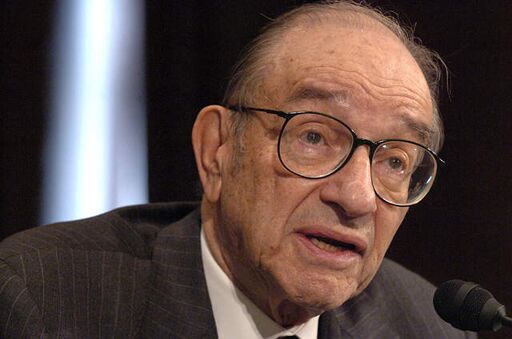
Greenspan’s Interest Rate Problem
Come January, Federal Reserve Chairman Alan Greenspan will retire. Will he get out in time?
The Federal Reserve just raised short-term lending rates to 4 percent, the highest level since the summer of 2001. By raising rates, Mr. Greenspan is walking a tight rope.
The Federal Reserve is in a precarious position, with risks on both sides of the interest rate problem.
On one side of the balancing pole, Mr. Greenspan is raising rates in an effort to slow the economy, thereby dampening inflation in order to support the dollar.
If Greenspan doesn’t raise interest rates, inflation could get out of control and the dollar could start weakening again.
There are signs that inflation is starting to show its ugly face. The Economist estimates that in September, America’s 12-month rate of consumer-price inflation was 4.7 percent—the highest since 1991 (October 22). In other words, if this rate of inflation holds, the $100 you saved this year will only be able to buy you $95.51 worth of goods next year. If you start to compound the losses due to inflation over time, you can see how awful it is for savers.
Inflation is now higher than when Mr. Greenspan took office in 1987. The Economist also noted the increase in demand for inflation-protected Treasury bonds, another sign that investors may see more inflation on the horizon (September 24).
A weaker dollar is in itself inflationary too, since so much of what American consumers now buy is imported (just look at the shelves at WalMart). As the value of the dollar drops, the cost of goods imported from other countries increases. Nowhere has this been reflected more than in the commodities markets, where the price of everything from gold to energy has been breaking records in terms of U.S. dollars. Even fresh vegetables have jumped 17.5 percent this year over last year (Morgan Stanley, November 11).
On the other side of the balancing pole is the downside to Greenspan’s strategy, because as he continually raises the lending rate, it progressively heightens the risk of slowing consumer spending. And since consumer spending now makes up 70 percent of the economy, there could be disastrous results.
Rising interest rates could negatively affect the consumer and hence the economy in several ways.
As interest rates rise, so does the borrowing cost for millions of Americans. Consumers are seeing increased finance costs on adjustable-rate debt like home equity lines of credit and credit cards. According to Bankrate.com, credit card interest rates are now as high as 30 percent, and many companies are increasing late charges and doubling the minimum payments from 2 to 4 percent.
There are already signs that the American consumer is tapped out. For an unprecedented fourth month in a row, from July to October, the personal savings rate was negative. Not since the Great Depression has there been a personal savings rate this low for this long. This fact should be ringing alarm bells in the ears of everyone interested in the economic health of the nation.
Consumers are spending more than they are earning—financing extra spending by borrowing on credit cards or home equity, selling investments (stocks, bonds and other assets), or by using savings from previous months. A lack of savings does not bode well for future economic growth, since savings fuels investment and a nation’s subsequent growth.
Furthermore, personal bankruptcies and credit card delinquencies are increasing—both setting new records in September.
Another real threat to the economy is a popping of the housing bubble. First, if rising rates succeed in slowing the economy too much, there will be fewer people who can afford to buy homes at current prices. In other words, there will be falling demand for home ownership. Consequently, the sale price for these homes will be forced down in an attempt to attract buyers.
If home prices slide for too long, it could create a nasty, self-perpetuating cycle. If investors feel their investments are no longer increasing in value—or worse, possibly losing value—they will be quick to dump them. This will add additional supply to an already slowing market and could thereby induce a cycle of falling property prices that continually forces one investor after another to part with his investment, thus adding more property to the mushrooming supply. In other words, investors offloading investment properties could be the needle that pops the housing bubble.
This scenario seems more likely when one considers the fact that many of the homes purchased over the last few years are second homes or investment properties. These are houses that investors could easily part with while still maintaining their primary residence.
All these extra houses added to the market would invariably slow the construction and home-building-related fields, further pressuring the economy. Declining property values would be grievous to the many Americans who have been using their homes as atm machines via the refinancing boom the past few years. Worse, it will also affect the many people who have come to rely on rising homes prices to fund their retirement.
There are certainly many forces, each pulling the economy in different directions. Up until now, it seems the markets have believed that Mr. Greenspan can balance economic growth and inflation against the backdrop of rising interest rates. However, Mr. Greenspan’s tightrope walk may almost be over.
Maybe the real question should be, how good of a tightrope walker will Ben Bernanke, the next Fed chairman, be?
